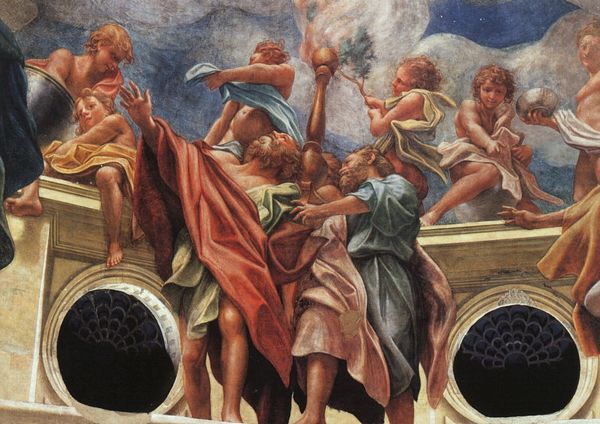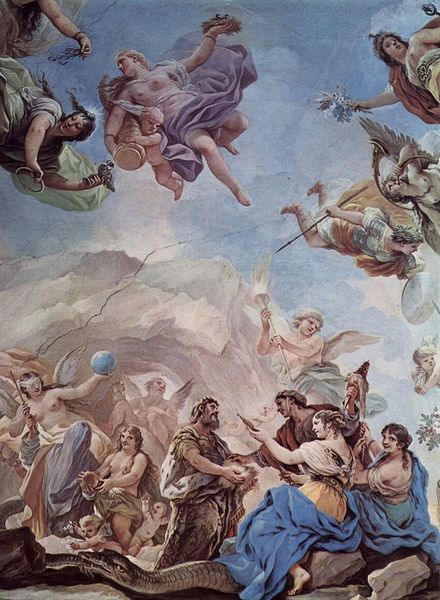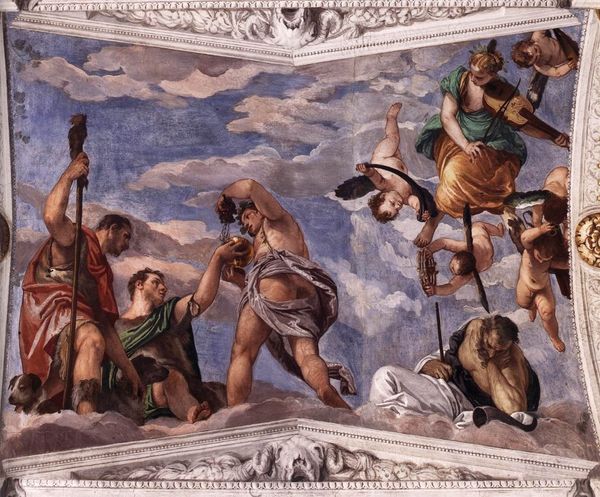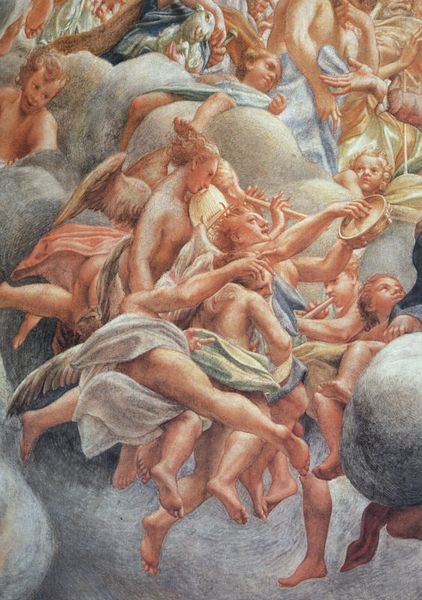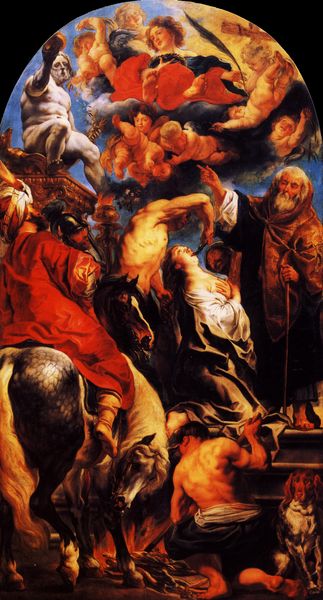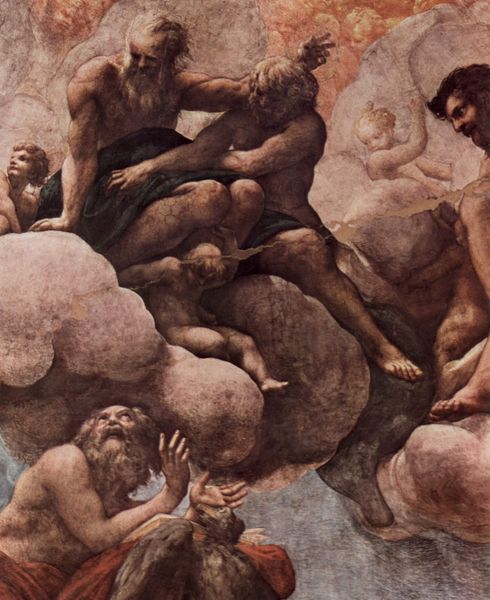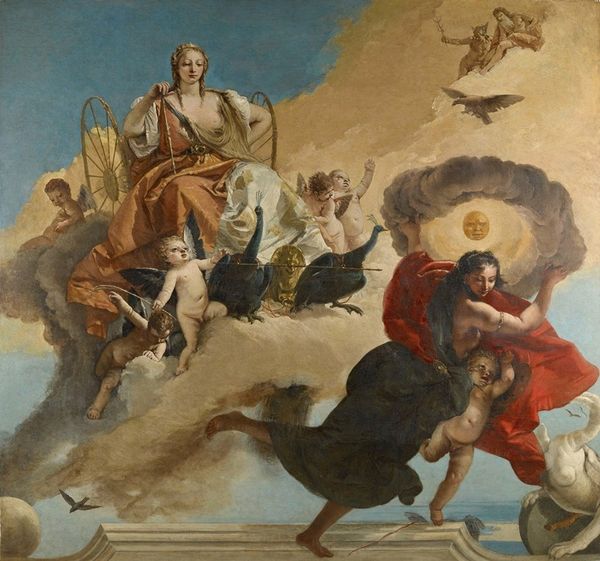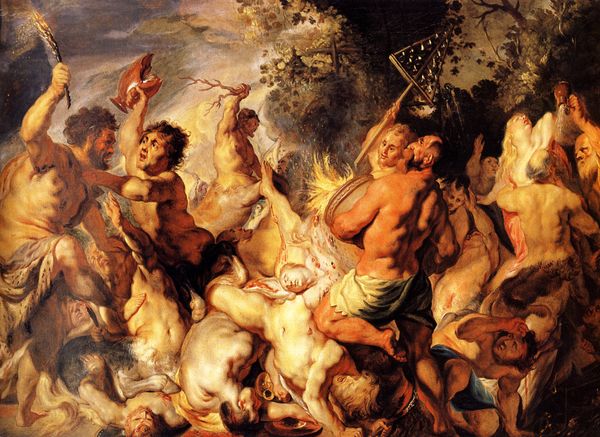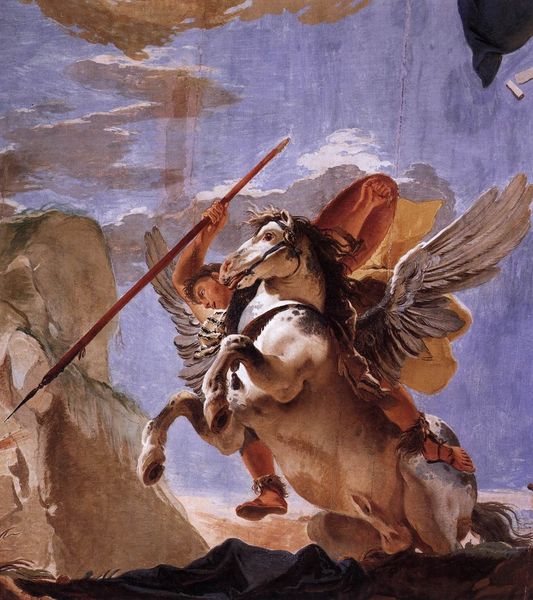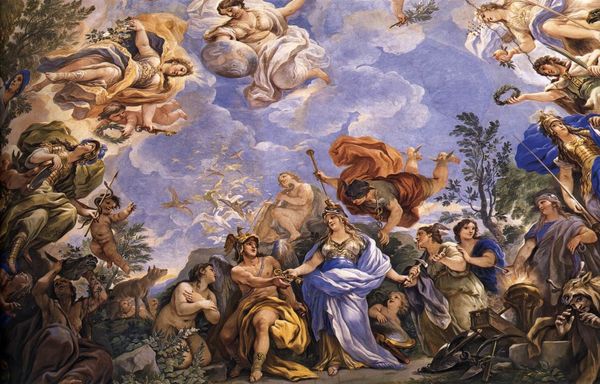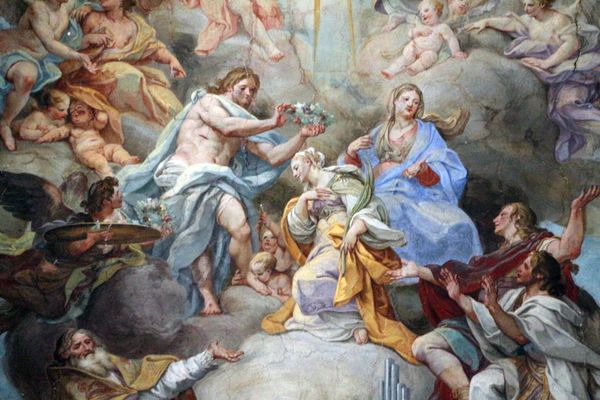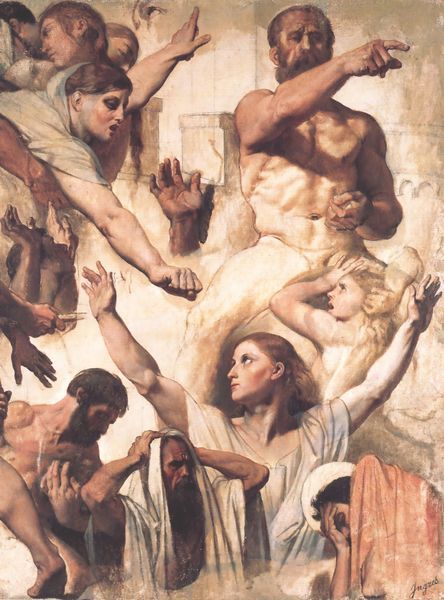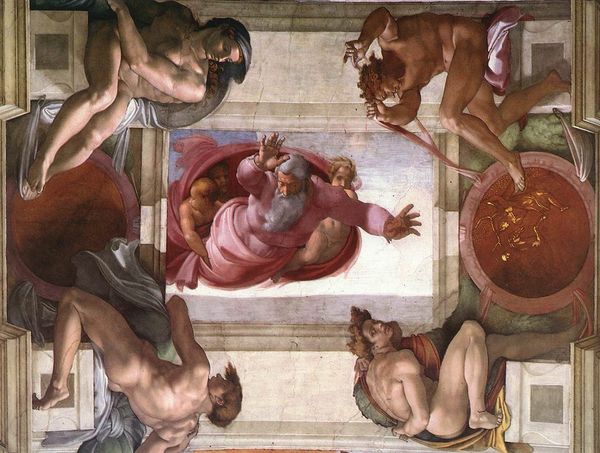
oil-paint, fresco
#
portrait
#
allegory
#
baroque
#
oil-paint
#
landscape
#
figuration
#
fresco
#
oil painting
#
roman-mythology
#
mythology
#
line
#
history-painting
#
italian-renaissance
Dimensions: 700 x 280 cm
Copyright: Public domain
Curator: Looking at Guido Reni’s “Aurora,” painted in 1614 on the ceiling of the Palazzo Pallavicini-Rospigliosi in Rome, the overwhelming feeling is one of movement, isn't it? A sense of propulsion, lightness, and joyous dawn. Editor: Absolutely, you’re immediately drawn into this swirling, almost ecstatic procession. There’s something timeless and universal about it. I see a convergence of classical and more emotionally resonant symbols. It strikes me as being remarkably celebratory. Curator: The composition certainly borrows heavily from classical imagery. Apollo, god of light, leads the chariot, while Aurora, goddess of dawn, scatters flowers ahead. These figures represent an established, ruling elite, reminding viewers of power and order, painted at a time of immense religious and social transition. Editor: But the piece transcends simple authority through its visual language. Look at the dynamism of the horses, the billowing drapery, and Aurora herself—she embodies a sort of hope. And Eros, darting above Apollo—that figure promises not just light, but love, doesn't he? Even his torch seems to signal desire more than simple illumination. Curator: A clever observation! The fresco itself became quite influential within artistic circles. Reni, by the 17th century, occupied a powerful position in Rome’s art scene, so commissions like these also signaled certain levels of political favor. Consider too where it’s placed— on a ceiling. The viewers, invited to quite literally look up to this vision. Editor: Indeed. I'm struck, also, by how skillfully he blends idealized figures with a more Baroque sense of movement. These aren't just static allegories, they’re bursting with life! And I am also drawn to this darker, cloudier portion on the lower part of the fresco, which represents night, now banished. Even the absence of light holds its symbolic weight. It feels like Reni’s way of saying something complex about the very nature of transformation. Curator: Yes, the politics, art, and life converge quite elegantly in this one masterpiece. Editor: Definitely a vibrant testament to dawn, both literal and figurative, that continues to inspire new conversations.
Comments
No comments
Be the first to comment and join the conversation on the ultimate creative platform.
